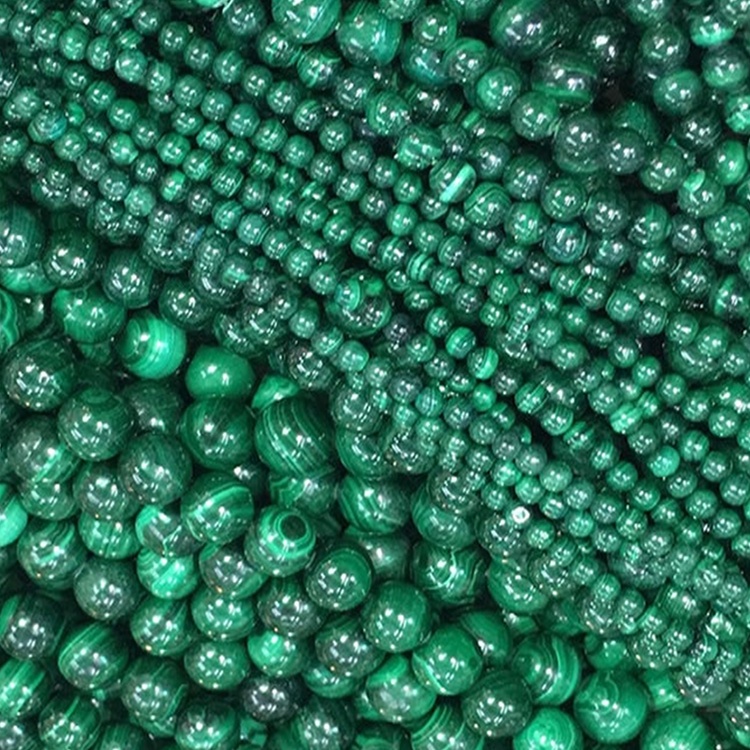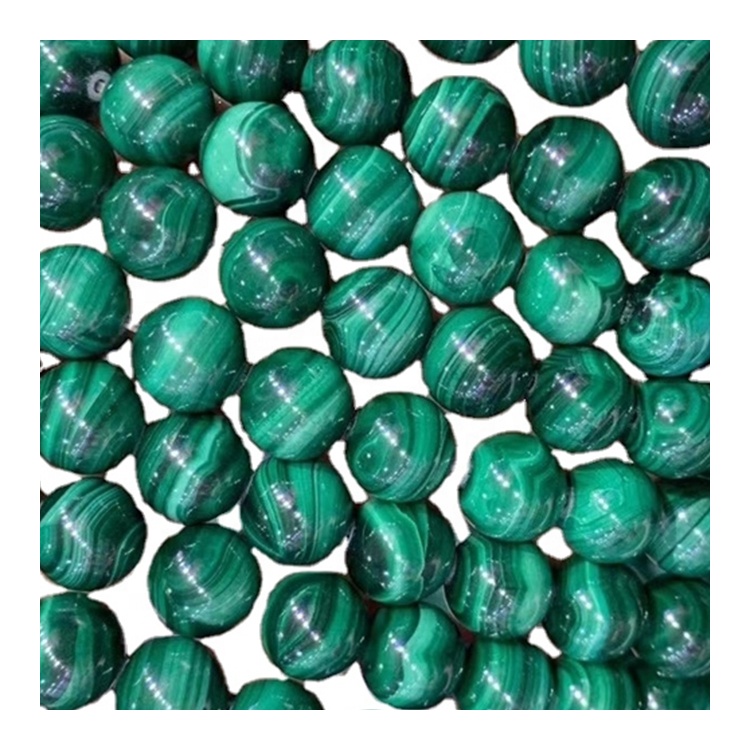Malachite
Malachite
Malachite is an ancient jade material whose main component is basic copper carbonate. The English name of malachite is Malachite, which is derived from the Greek word Mallache, which means "green". In ancient China, malachite was called "green green", "stone green" or "blue langgan". Malachite has such a beautiful name because of its color resembling the green spots on peacock feathers. Malachite is produced in the oxidation zone of copper sulfide deposits, and often coexists with other copper-bearing minerals (azurite, chalcocite, cuprite, natural copper, etc.). The world-famous production areas include Zambia, Australia, Namibia, Russia, Zaire, the United States and other regions. China is mainly produced in Yangchun, Guangdong, Daye, Hubei and northwestern Jiangxi. Malachite is also called "sapphire jade", "sapphire sapphire" and "blue chalcedony".
Main components: Malachite is a carbonate mineral containing copper. The chemical composition is Cu2(OH)2CO3, CuO 71.95%, CO2 19.90%, H2O 8.15%. It belongs to the monoclinic system. The crystal form is often columnar or needle-like, very rare, usually in the form of cryptocrystalline stalactite, block, crust, nodules and fibrous aggregates. It has a concentric layered and radial fiber structure. There are green, malachite green, dark green and so on. It often has stripes, silky luster or glassy luster, which seems to be transparent to opaque. The refractive index is 1.66-1.91, the birefringence is 0.25, and the pleochroism is colorless-yellow-green-dark green. Hardness 3.5-4.5, density 3.54-4.1 g/cm3. It is brittle in nature, with conchoidal to uneven fracture. It reacts with hydrochloric acid and is easily dissolved.

Origin: Malachite has such a beautiful name because of its color resembling the green spots on peacock feathers, and it is purified. In ancient China, malachite was called "green green", "stone green" or "Qinglanggan. Malachite is produced in the oxidation zone of copper sulfide deposits, and it often coexists with other copper-bearing minerals (azurite, chalcocite, red). Copper mines, natural copper, etc.). World-famous producing areas include Zambia, Australia, Namibia, Russia, Congo (Kingdom, the United States, etc.). China is mainly produced in Yangchun, Guangdong, Huangshi, Hubei and northwestern Jiangxi.
Maintenance: the maintenance of malachite. Malachite is not durable as a gemstone, has low hardness, and cannot maintain good luster for a long time. It can only be used as beads and brooches. The Russians used malachite as a material for interior decoration of buildings, and the large pillars of St. Isaac’s Cathedral in Leningrad were inlaid with malachite. Malachite is also used for carving various worship supplies and decorations, fireplaces and tabletop inlays.
Meaning: Malachite is an alteration product of copper-bearing carbon salt, and is often used as a co-product of copper ore. It has a hardness of 3.5-4, an opaque dark green, and a striped pattern with shades of color-this unique beauty is not available in any other gemstone, so there are almost no counterfeit products.
Distinguish malachite from turquoise: According to a series of characteristics of malachite, it can be distinguished from other gems. It is mainly similar to turquoise. But the color of turquoise is mainly blue and green, the density is less than that of malachite, and the hardness is greater than that of malachite.
Green striped glass is also used to imitate malachite. The main difference is that the glass has short stripes and unstable width. The glass does not see silky luster and conchoidal fractures, and there may be bubbles in the glass, the density is less than malachite, and Malachite has a striped pattern with shades of color, so it is easy to be recognized.
Malachite is produced in Russia, Romania, Brazil and so on. China's malachite origin is mainly in Hubei.

The word "malachite" has the meaning of "wife happiness". Natural malachite presents a strong green and emerald green luster. Although it does not have the brilliance of jewelry, it is a noble stone with a unique and elegant temperament. Malachite has many mysterious legends. As early as thousands of years ago, the ancient Egyptians once called it a "sacred stone" and believed that it had the effect of repelling evil, so it was used as a talisman; in Germany, people believed that people wearing malachite could avoid the threat of death , In fact, fundamentally speaking, it is also the role of amulets. In ancient my country, malachite was made into various kinds of jewelry to wear, but because of its high price, ordinary people did not have the chance to wear it.
.effect:
anti-oxidation. There is also natural copper in malachite, which can activate the natural antioxidant enzymes (SOD) in the skin, so that the antioxidant enzymes in the skin can play a maximum role to achieve the purpose of anti-oxidation. Wearing malachite jewelry can slow down the formation of the skin's stratum corneum, so as to achieve the effect of delicate and tender skin.
.
Disinfect and regenerate, to decompose and grow new. The ancient Egyptians used to grind malachite into a powder and apply it to the ulcerated wound to heal it. Therefore, wearing malachite jewelry can absorb the natural energy contained in malachite and absorb external radiation to reduce skin irritation.
.
French scientists once extracted a natural active substance from malachite. This material is extremely safe, can improve the natural resistance of cells, remove residual impurities in the cells, thereby enhancing cell viability. Moreover, this malachite extract is green, safe, and will not cause any burden to the skin. So this is also the fundamental reason why modern people are keen on malachite jewelry, which is naturally harmless.

Contact: :AnnaHe
Mobile/Wechat/WhatsApp : +86 13751114848
Contact :JeamChen
Mobile/Wechat/WhatsApp: +86 13425105392
Email: info@TurquoiseChina.com
Company address:
Room 1307 Tower A,Yanlord Dream Center,Longcheng Street, Longgang District, Shenzhen,Guangdong Province,China 518172
See the surprise, please consult our customers.


Become An Insider











































































































